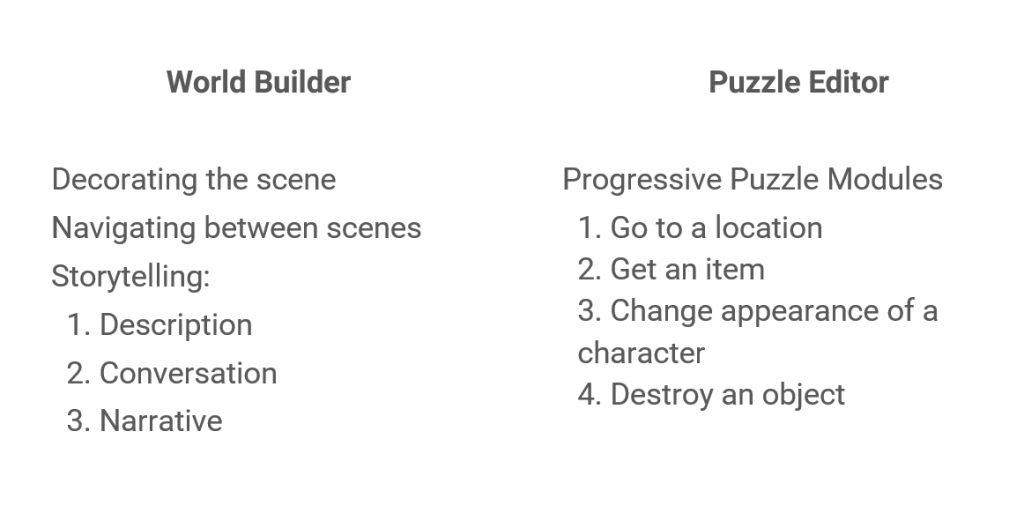Last week, we designed a way to build the puzzles progressively, which is our progressive puzzle modules solution. This solution follows the pattern of a puzzle and allows the user to only focus on one option at a time. Since the halves presentation is coming, this week we were preparing some basic features for the demo which we can show in the presentation. Also, when we were stepping back for an overview of our project, we found something we overlooked before, the scene editor.
The MVP Target
The reason we are building an MVP demo varies. First, we need to get something to show in the halves presentation. All we had before are paper prototypes while they are not that suitable for the presentation. Second, we have struggled with design iterations for a long time (about 4 weeks). Maybe it’s a good time for us to take a break from that rabbit hole and do some programming. As suggested by our instructors, the MVP demo can really be minimal, since one of the goals of this demo is to make sure the technical pipeline works. They also suggested us to choose an existing point-and-click adventure game as our target, even for the final product.
With that in mind, we soon listed out three candidates and then decided to pick one among these three. The three candidates are all the first puzzle in the adventure game so they are all fairly simple, and the one we chose in the end is the first puzzle, the airplane puzzle, from Sabrina And Dave’s Adventure (SADA) made by our instructor Dave Culyba. We chose this puzzle as our target, not only because it was made by our instructor, but also this puzzle covers a lot of basic features our final product will cover:
- The ability to compose a puzzle with Goal-Solution-Challenge pattern (in this case is to go to the airport by clicking the arrow and to unlock the arrow by operating the call button).
- The ability to add a description to an object (the call button)
- The ability to add narrative to a scene (the radio in the beginning)
The World Builder
When we were creating our slide deck, we found we were focusing on the puzzles in the point-and-click adventure games too much. The adventure games are not only about puzzles. The game designers also need to tell a story in the game, mostly by building a virtual world. There are several things cannot be covered in the puzzle editor (since they are not puzzles at all!), such as descriptions of objects, narratives of scenes and conversations with characters. All of those should be involved in the scene editor.
Now the scene editor is more powerful than only placing different objects in the scenes, so we also upgraded
We didn’t have much time to develop how the users can use the world builder, while we can still show you an overview of the features of different editors and a sketch of the world builder.

